What Are the Best Pearls to Buy and How to Tell Them Apart

Whether you're a first-time buyer or have an existing collection, it's crucial to know the qualities to search for if you're interested in purchasing pearls. Pearls come in various types, shapes, sizes, and other characteristics that impact their quality and value.
As a jewelry expert, in this blog post, I'll show you the different types of pearls and provide tips on how to tell them apart. I'll also recommend how you can choose the best quality pearl for your budget and where you can buy them. So, if you're ready to find out more about these beautiful gemstones, keep reading!
How Are Pearls Made?
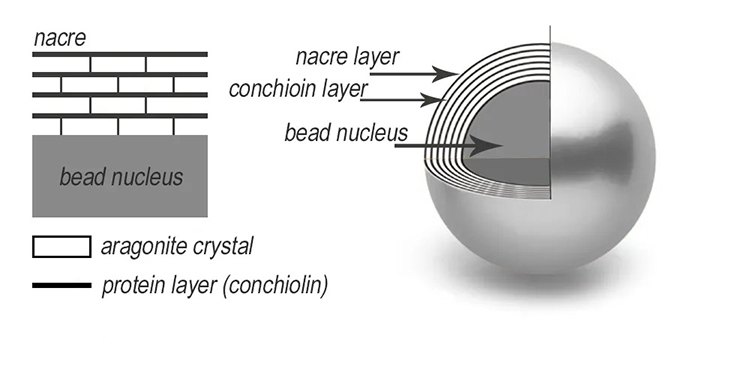
Did you know that pearls originate from oysters and have distinctive features? There are many different types of pearls on the market, so it is hard to decide which type is the best to buy.
Natural pearls are scarce and expensive. They are formed when a foreign object, such as a grain of sand, gets inside an oyster, and the oyster starts to secrete nacre to protect itself. You can choose them if you want a unique and luxurious piece of jewelry.
Cultured pearls are more common and less expensive. They are created when a farmer inserts a foreign object into an oyster to stimulate it to secrete nacre. You can choose them if you want a classic but cheaper pearl necklace or earrings.
What Is the Best Type of Pearl to Buy?
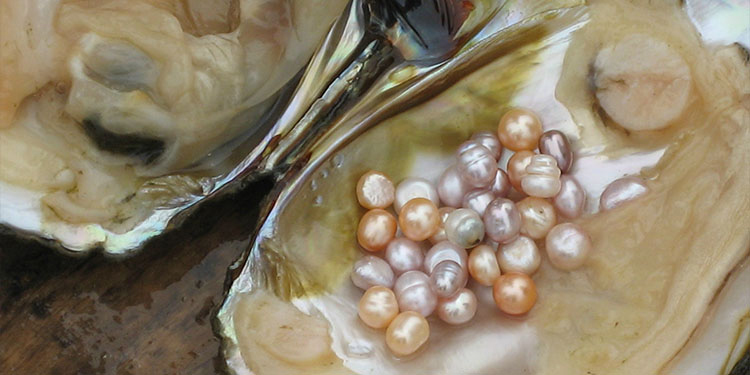
Cultured pearls are the most popular choice for jewelry and a good reason. Cultured pearls are more lustrous and have fewer blemishes than natural pearls. They come in various colors, sizes, and shapes, making them perfect for any occasion.
When shopping for pearls, you will likely come across two main types of cultured pearls - saltwater and freshwater. So, which is the best type of pearl to buy?
Here are a few essential characteristics to consider when making your decision:
Saltwater vs. Freshwater Pearls
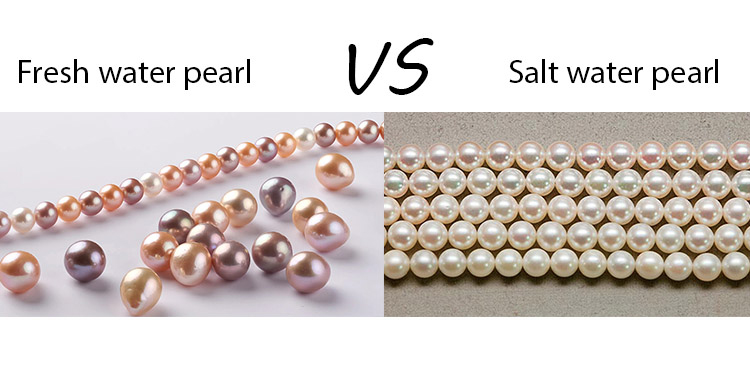
Saltwater pearls are more expensive than freshwater ones. Some of the most popular pearls, including Japanese Akoya pearls, Tahitian pearls, and South Sea pearls, are created in saltwater environments. Among these varieties, Akoya pearls are known for being both round and lustrous. They are also rare and have a higher quality. Saltwater pearls are perfect for special occasions and as a luxurious gift.
Freshwater pearls are more common than saltwater pearls. Freshwater pearls are created by the mussels that live in rivers and lakes. If they were also the largest, roundest, and most lustrous pearls, they could be worth as much as saltwater pearls. Freshwater pearls are a good choice for everyday wear or as a gift.
What's the Difference Between Saltwater and Freshwater Pearls?
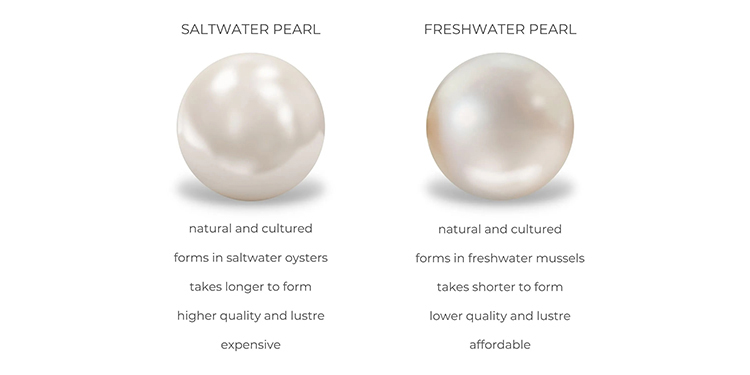
So, saltwater pearls and freshwater pearls differ in several ways. Freshwater pearls are grown in mussels in lakes, rivers, and ponds. Saltwater pearls are grown in oysters that live in the ocean.
Freshwater pearls are less expensive than saltwater pearls. Saltwater pearls are more round than freshwater pearls. Freshwater pearls come in various colors, including white, pink, and lavender. Saltwater pearls are usually white or cream-colored.
Popular Types of Pearls
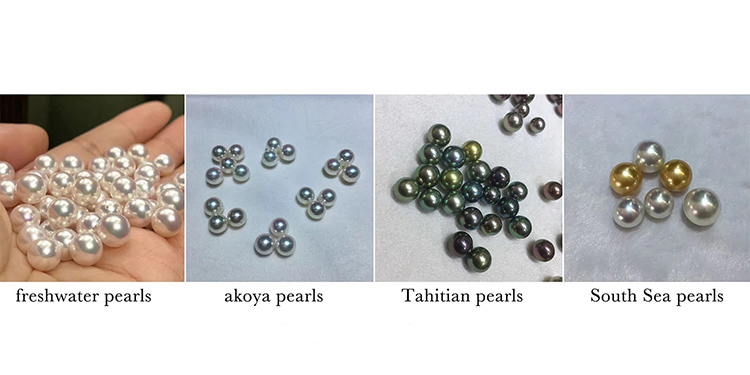
There are four main types of pearls on the market: Akoya, Tahitian, South Sea, and freshwater.
Akoya Pearls
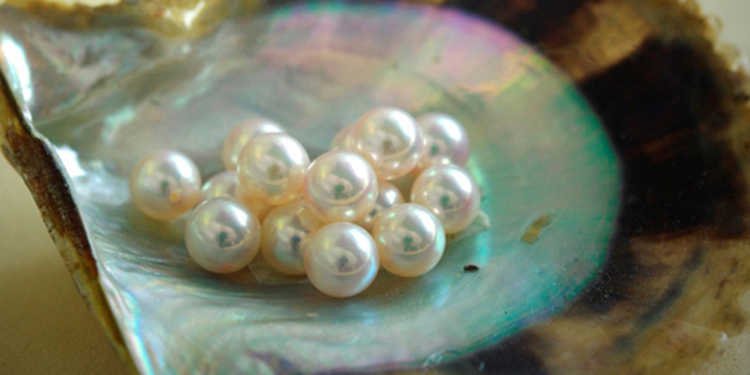
Akoya pearls are considered classic and have been cultivated for over a hundred years in Japan.
Origin - These lustrous gems are produced by the Akoya oyster, smaller than the South Sea and Tahitian oysters that produce other pearls. The Akoya oyster is native to the coasts of China, Korea, and Japan.
Shape - Akoya pearls are typically round but can be semi-baroque or baroque. They have a smooth and silky texture.
Size - Akoya pearls range from 2mm to 10mm. The average size is 6mm.
Color - The classic Akoya pearl is white with a hint of rose, but it can also be cream or ivory.
Luster - Akoya pearls have high luster, which means they have a bright, shiny surface.
Value - Akoya pearls are valued based on size, shape, color, and luster. The larger, rounder, and brighter the pearl, the more valuable it is.
Tahitian Pearls
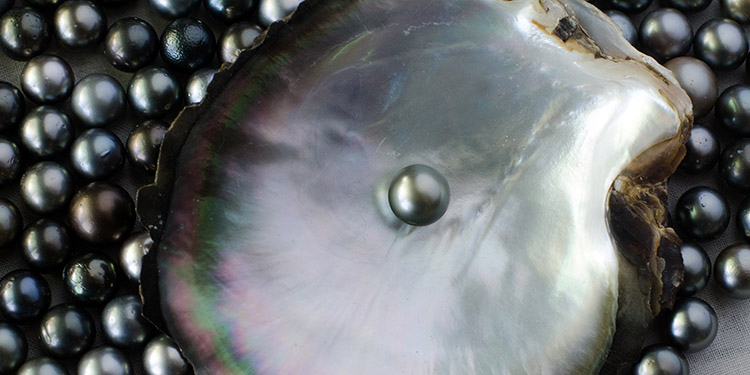
Tahitian pearls are some of the world's most beautiful and sought-after pearls.
Origin - Tahitian pearls are grown in the black-lipped oysters that live in the waters around Tahiti and other islands in French Polynesia.
Shape - Tahitian pearls are typically rounder and larger than other cultured pearls.
Size - Tahitian pearls range from 8 mm to 16 mm, with the average pearl around 10 mm.
Color - Tahitian pearls come in a wide range of colors, from classic black to unusual shades like green, blue, and aubergine.
Luster - Tahitian pearls have a high luster, which means they are very reflective and have a bright, shining surface.
Value - Tahitian pearls are some of the most valuable cultured pearls on the market. Their price can range from a few hundred dollars to several thousand dollars per pearl, depending on their size, color, and luster.
South Sea Pearls
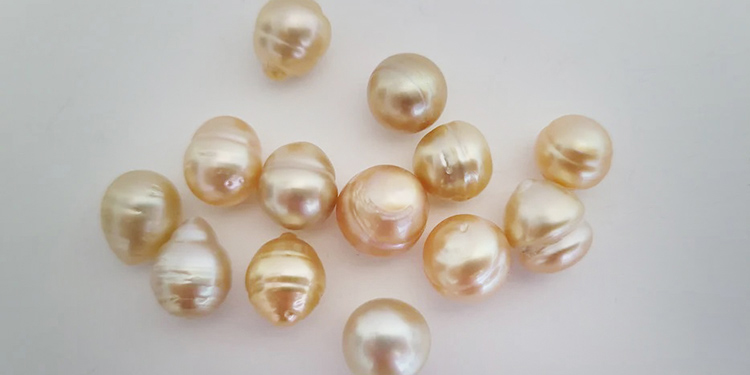
South Sea pearls are among the most beautiful and valuable types worldwide. South Sea pearls get their name from the region of the world where they are found: the South Pacific. The waters of this region are warm and clear, with a high level of salinity. These conditions are ideal for pearl cultivation.
Origin - South Sea pearls are the product of two species of large oysters: the silver-lipped pearl oyster (Pinctada maxima) and the golden-lipped pearl oyster (Pinctada margaritifera). These oysters can grow to more than a foot in length and weigh up to 14 pounds.
Shape - South Sea pearls are usually round or near-round in shape. They can also be oval, baroque (irregular), or pear-shaped.
Size - South Sea pearls are the largest type of cultivated pearl. They typically range in size from 9 to 16 millimeters. The largest South Sea pearl on record was found in the Philippines and weighed a staggering 34.65 grams!
Color - South Sea pearls come in various colors, including white, silver, cream, yellow, and gold. The most valuable South Sea pearls are those with a rich golden color.
Luster - South Sea pearls have a very high luster, with light reflecting off the pearl's surface. This makes them some of the most lustrous pearls in the world.
Value - South Sea pearls are among the most valuable. Their large size, rich colors, and high luster make them highly sought-after by jewelers and collectors. A single South Sea pearl can be worth thousands of dollars!
Freshwater Pearls
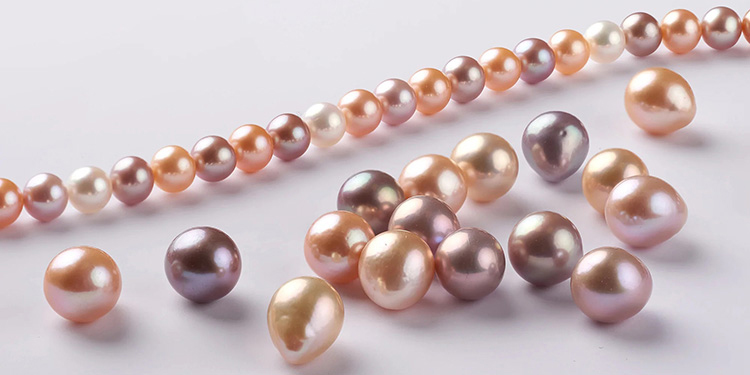
Freshwater pearls are a type of pearl found in freshwater bodies of water, such as lakes and rivers. These pearls are usually smaller than saltwater pearls and have a more irregular shape.
Origin - Freshwater pearls are grown in mussels in lakes, rivers, and ponds. Most of the world's freshwater pearlings occur in China, where pearl farming began 2,000 years ago.
Shape - Freshwater pearls are smaller and less round than saltwater pearls. This is because the mussels that produce freshwater pearls are smaller than the oysters that produce saltwater pearls. Freshwater pearls are also more irregular, as they are not as carefully cultivated as saltwater pearls.
Size - Freshwater pearls range from 2mm to 10mm. The average size is 6mm.
Color - Freshwater pearls come in a wide range of colors, from white to black. The most common colors are pink, lavender and peach.
Luster - Freshwater pearls have a good luster but are not as high as saltwater pearls.
Value - Freshwater pearls are less valuable than saltwater pearls. This is because they are less rare and easier to cultivate. A strand of freshwater pearls can range in price from $100 to $1,000.
What Is the Best Quality of Pearl?
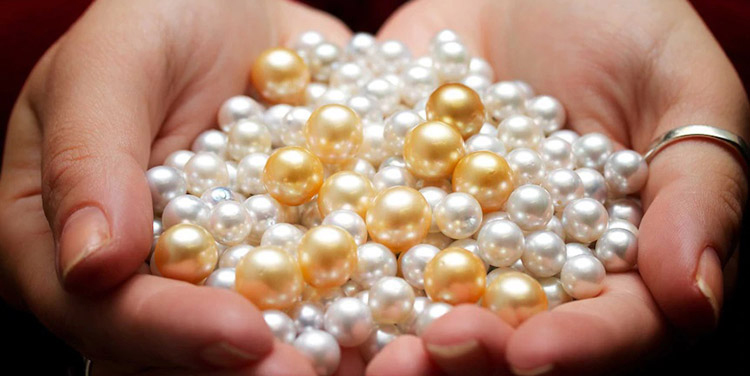
The quality of pearls is judged by their luster, surface imperfections, size, and shape. The best quality pearls will have a high luster, be free of surface imperfections, and have a round or near-round shape. The size of the pearl is also a factor in determining quality, with larger pearls being rare and, therefore, typically of higher quality.
Pearls are graded from A to AAA, with AAA being the highest quality. Grading is based on the abovementioned factors, with luster being the most important. Surface imperfections and shapes are also taken into account when grading pearls. For example, a pearl with surface imperfections but a high luster and round shape would be graded as AA.
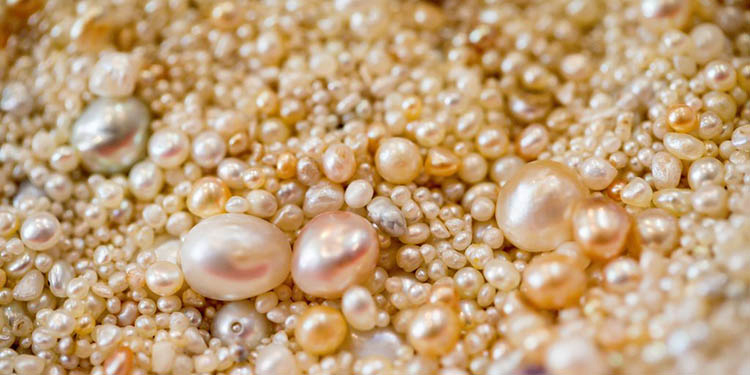
If you want to purchase a high-quality pearl, it is important to research and purchase from a reputable dealer. For example, Akoya pearls are typically graded on a scale from A to AAA, with the vast majority of pearls being in the AA-B range. You can choose them if you want to get a good quality pearl.
South Sea and Tahitian pearls are typically graded on a scale from A to AA, with the vast majority of pearls being in the A-B range. You can buy them if you need a less expensive option but still want a beautiful pearl.
Where Is the Best Place to Buy Pearls?
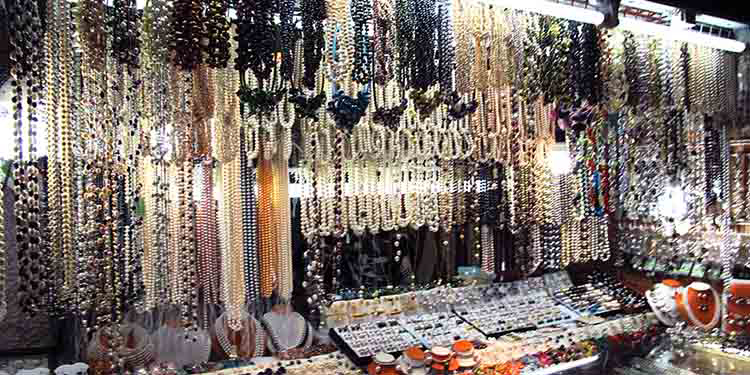
When making an important and major purchase like pearls, it's necessary to weigh your options carefully. There are advantages and disadvantages to traditional retail and online buying, so it's important to consider what's most essential to you before making a decision.
Traditional Retail
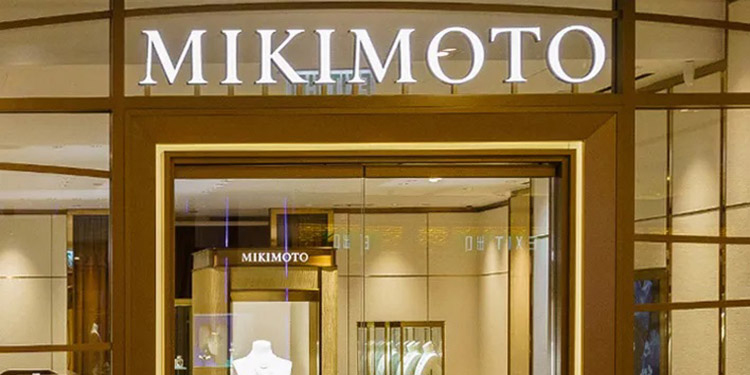
It's important to buy pearls from a reputable source, whether in person or online. While you can usually find better deals online, some people prefer the convenience of picking up and trying on pearls before buying them.
Traditional retail is your best bet if you're looking for the widest selection of pearls. However, traditional retail markup is approximately 3 - 10 times higher than the true cost of the pearls. You'll also need to consider the cost of gas and parking if you're shopping in person.

Many popular brands like Mikimoto, Tiffany & Co., and Harry Winston have brick-and-mortar locations where you can buy their pearls. These are all reputable sources, but their prices will reflect that.
You can find better deals at a local jewelry store if you're not set on a particular brand. However, it's essential to research before making any big purchase, as not all jewelers are created equal.
Buying Online

Another option to buy pearls is online through different websites. While you may not be able to try on the pearls before buying them, you'll have a much wider selection. Plus, you'll be able to compare prices more easily to find the best deal.
Here are some websites where you can choose the greatest jewelry:
· Mikimoto.com - This is the website for the famous Mikimoto brand. They have a wide selection of both classic and modern pearl jewelry. Prices start at around $200 and go up from there.
· purepearls.com - This website offers a wide range of pearl jewelry, from bracelets and engagement rings to necklaces and earrings. Prices start at around $50.
· pearlsource.com - This website specializes in Akoya, Tahitian, and South Sea pearls. They have a wide selection of both loose pearls and finished jewelry. Prices start at around $100.
· eBay.com - You can find about anything on eBay, including pearls. Pearl jewelry starts at around $20, but research before buying anything to ensure you're getting a good deal.
The main advantage of buying online is that you'll find better deals. However, you won't be able to try on the pearls before you buy them, so keep that in mind when making your decision.
Bottom Line
So, what are the best pearls to buy, and how can you tell them apart? The answer is - it depends. If you want a pearl for everyday wear that won't break the bank, go with a freshwater cultured pearl. They come in many colors, shapes, and sizes, so you can easily find one that fits your style.
If you're looking for something more luxurious, consider an Akoya saltwater cultured pearl. They tend to be rounder and have a higher luster than their freshwater counterparts.
And if you want to splurge on a special occasion, go with a South Sea or Tahitian saltwater cultured pearl – they're some of the most beautiful gems in the world. With so many options available, it's easy to find the perfect pearl. So, what are you waiting for?


Leave a Comment